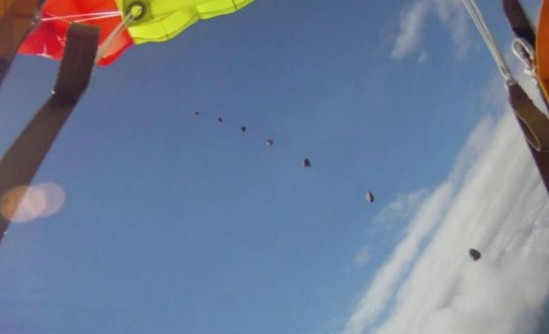Our love affair with Enceladus grows deeper:
 A substantial ocean most likely exists beneath the icy surface of Saturn’s diminutive moon Enceladus, raising the possibility that primitive forms of extraterrestrial life exist in its briny depths.
A substantial ocean most likely exists beneath the icy surface of Saturn’s diminutive moon Enceladus, raising the possibility that primitive forms of extraterrestrial life exist in its briny depths.
The ocean lies between the moon’s rocky core and a layer of thick ice, and is estimated to be about the size of Lake Superior. That’s large for a moon that is only 310 miles (500 kilometers) in diameter and could fit within the borders of Arizona.
In our solar system, the only other moon known to have similar contact between liquid water and rock is Jupiter’s Europa. Both the rock and the water are considered to be essential for the chemistry that could, over eons, turn nonliving matter into living entities.
“The main implication of our work is that there are potentially habitable environments in our solar system that are entirely unexpected,” said Luciano Iess, an aerospace engineer at the Sapienza University of Rome and lead author on the study published Thursday in the journal Science.
(Kaufman)
The essential question is actually a matter of opinion, sort of: How important is this?

